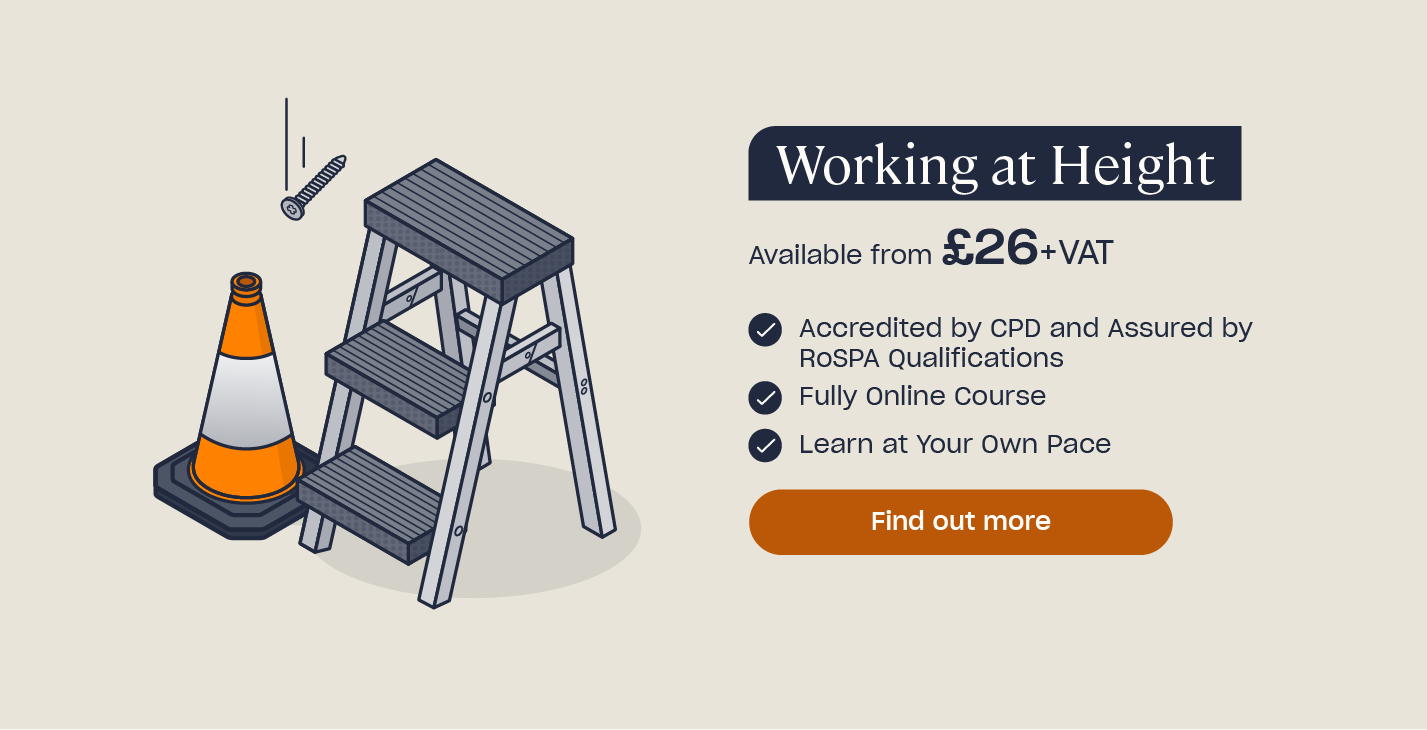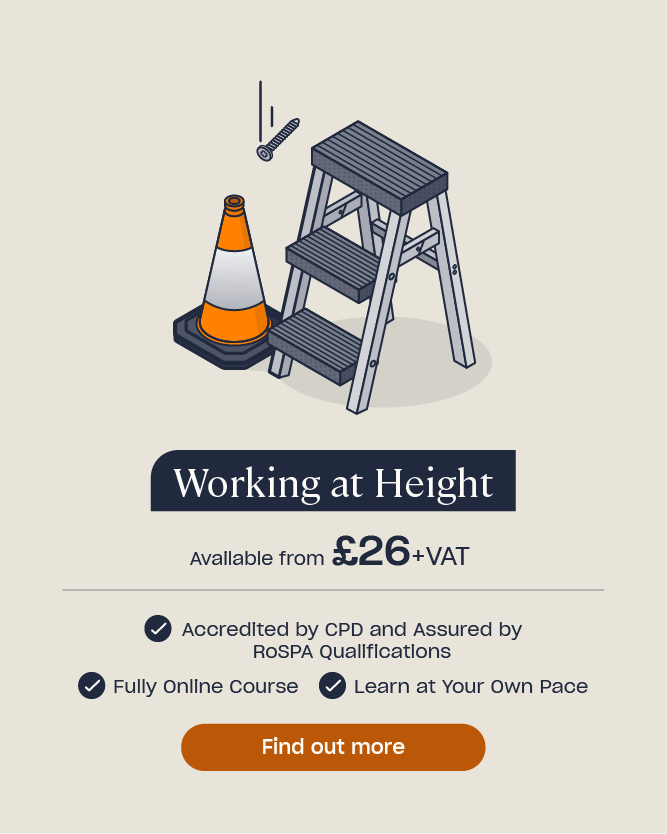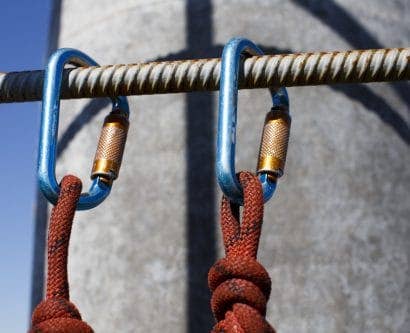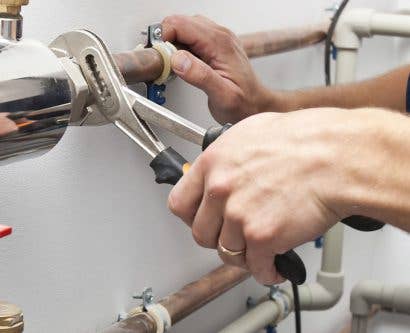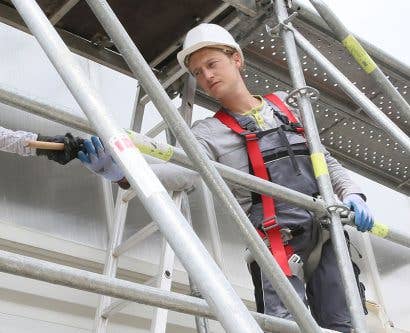Working at Height Risk Assessment
A risk assessment is a careful examination of what in your workplace could cause harm to people. It enables you to weigh up whether you have taken enough precautions, or should do more to prevent harm.
By law, employers are required to assess the risks in their workplace so that they can put in place a plan to control the risks. It’s crucial for you to know how to carry risk assessments out, not only to comply with this legal requirement but also to ensure people can work safely.
Creating a Working at Height Risk Assessment
There are 5 key steps of a working at height risk assessment:
- Identifying the hazards.
- Deciding who might be harmed and how.
- Evaluating the risks and deciding on precautions.
- Recording your findings and implementing them.
- Reviewing your assessment and updating if necessary.
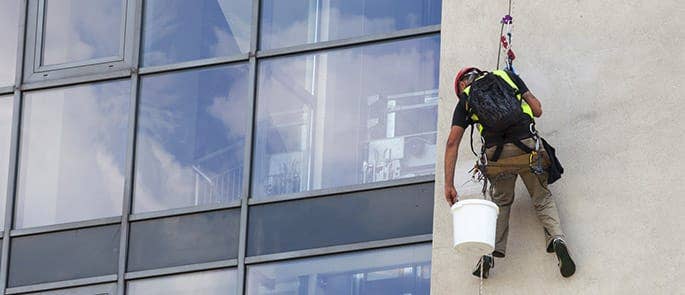
Risk Assessment Step 1: Identifying the Hazards
The first step of a risk assessment is to identify the hazards that are present in the workplace.
You can identify the hazards through:
- Workplace observations.
- Obtaining feedback from employees.
- Checking the manufacturer’s instructions or data sheets for any equipment.
- Reviewing past accident and ill health records.
This could involve looking out for things such as slip and trip hazards, lone-working, manual handling, cleaning chemicals or fire risks etc.
For working at height activities, the Work at Height Regulations 2005 state that certain work-specific factors also need to be considered in the risk assessment.
These factors are:
- The working conditions and the risks to the safety of people at the place where any work equipment is to be used.
- The distance and consequences of any potential fall.
- The duration and frequency of use of work equipment.
- The necessity for an easy and timely evacuation and rescue in an emergency.
- Any additional risk posed by the use, installation or removal of work equipment or by the evacuation and rescue from it.
- Whether the work equipment is appropriate to the nature of the work to be performed.
- Whether the work equipment allows passage without risk.
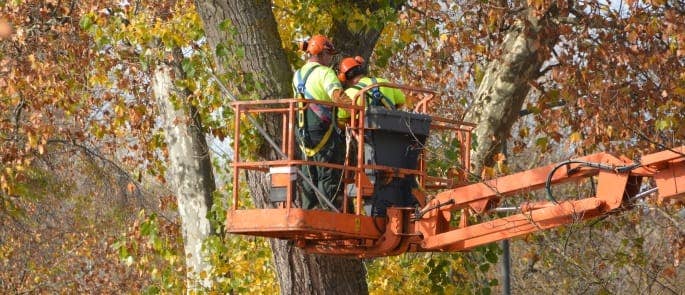
Risk Assessment Step 2: Deciding Who Might be Harmed
The second step in the work at height risk assessment involves looking at each specific hazard and then identifying the people who may be harmed by them.
People at risk may include:
- Specific groups of employees.
- Customers and members of the public.
- Visitors.
Some employees also have particular requirements, such as:
- Young workers.
- Expectant mothers.
- People with disabilities.
- People who are not at work all the time, such as part-timers and sub-contractors.
Make sure that you consider every person involved in the work area where the hazard is present.

Risk Assessment Step 3: Evaluating the Risks
The next step in the risk assessment is to evaluate the hazards that you have identified and decide whether they can be eliminated. If not, how can you control the risks so that harm is unlikely?
You could consider:
- Trying a less risky option.
- Preventing access to the hazard.
- Re-organising work to reduce or control exposure.
- Training staff to ensure they understand the hazards and precautions to be taken.
- Issuing personal protective equipment (PPE).
Think about the control measures that you already have in place: are these sufficient? Do you need to improve them or introduce new control measures?
Need a Course?
Our Working at Height Training helps you to comply with the Work at Height Regulations 2005 by providing employers and employees with the necessary information needed to be able to successfully deal with working at height risks and control measures.
Risk Assessment Step 4: Recording Your Findings
Workplaces that have more than 5 employees are required by law to record their risk assessment findings. However, it is recommended that you do so anyway even if your workplace has fewer.
Keeping records is crucial, as you need to be able to show that:
- A proper check was made.
- You have considered who might be affected.
- You have dealt with all the obvious significant hazards, taking into account the number of people who could be involved.
- The precautions are reasonable and the remaining risk is low.
- Staff or their representatives have been involved.
Use a fresh risk assessment sheet for each assessment you complete and for each area of the workplace. Ensure that you date the risk assessment, record details of who the assessor was, and write down action due-dates and completion dates.

Risk Assessment Step 5: Reviewing and Updating
You should check on a regular basis, such as every 6-12 months, to see whether there have been any changes in your workplace that may affect your risk assessment.
For example:
- Are there any improvements still to be made?
- Has there been employee feedback?
- Have you learnt anything from accidents and near misses?
- Has any new equipment or machinery been introduced?
- Do you have any new employees that require training?
You should also be sure to update the risk assessment on an as-and-when basis to ensure it remains up-to-date. For example, if you have a new staff member, there is an accident or you introduce some new equipment.
Updating your risk assessment regularly is crucial for keeping on top of existing and developing hazards. It ensures that you consistently maintain sufficient health and safety measures and protect the people who work on site.
Further Resources:
- Working at Height Regulations; Hierarchy of Control Measures
- How to Develop a Rescue Plan for Working at Height
- Working at Height Quiz
- Establishing an Effective Lone Working Buddy System
- Working at Height Training


